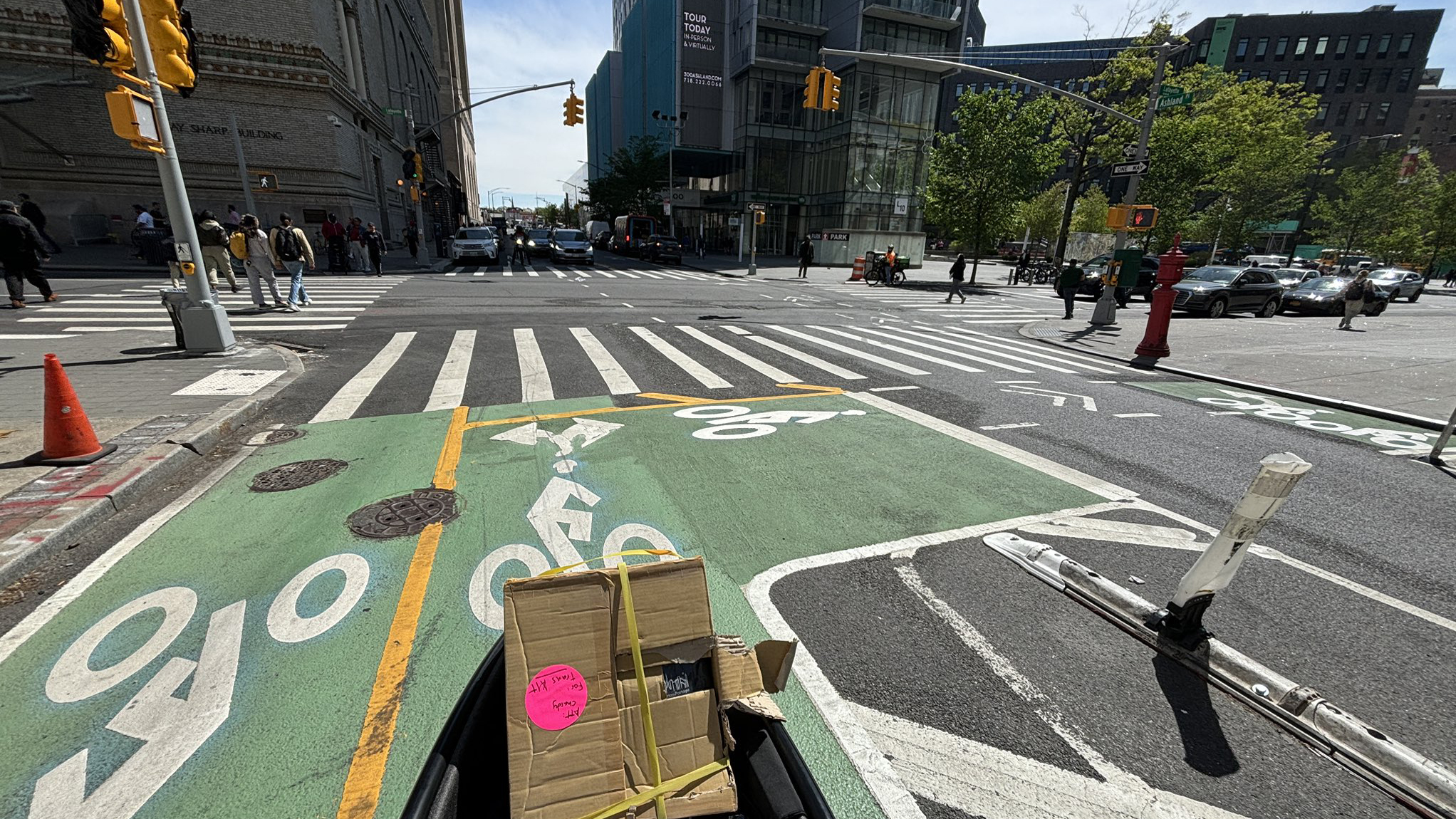The biggest sustainable transportation story in New York right now is how DOT and the MTA plan to design Bus Rapid Transit corridors for the East Side of Manhattan. Will we get world-class avenues that attract more riders to the bus, relieve the jam-packed Lexington subway line, make cycling safer, and enhance the pedestrian environment? If so, the city will improve life for hundreds of thousands of New Yorkers and set a tremendous precedent in sustainable street design. If not, the standard for BRT corridors will be set low as the city starts rolling out up to a dozen more routes.
Sometime next month, reports Pete Donohue in today's Daily News, DOT intends to release detailed plans for First and Second Avenues. So far, we've only seen what an "off-set" bus lane configuration would look like, but DOT and the MTA are still considering a range of options. It's pretty clear that off-set bus lanes, placed between curbside parking and traffic, won't qualify as world-class.
Unlike separated lanes, off-set lanes require camera enforcement -- and state legislation -- to function properly. Albany rejected bus cams last year, and even if legislators suddenly change their minds, a camera-enforced off-set configuration invites conflict. Buses would have to contend with cars and delivery trucks trying to access the curb. Separated lanes eliminate that conflict and, paired with protected space for cyclists, invite more biking and walking.
So what would real-deal BRT look like on the East Side? The image up top is one of two options that Transportation Alternatives is backing to deliver the maximum benefits for transit riders, cyclists and pedestrians. The window of opportunity to get these ideas out there won't stay open much longer.
"We are pushing for a visionary design that's going to catalyze thousands of pedestrians, cyclists and bus riders, and turn them into champions of BRT," said TA's Wiley Norvell. "We know there will be opposition to change on First and Second Avenues, regardless of what is proposed; what is critical is that the design delivers the kind of new mobility that will build its own constituency of ardent supporters." Each option is projected to reduce the 70-minute travel time along the whole M15 bus route down to about 40 minutes, Norvell said. Implementing the same improvements applied to the Bx12 route on Fordham Road would only bring travel time down to 60 minutes.
Follow the jump for the other preferred design, showing a center-median bus-and-bikeway.
Keep in mind that these are conceptual plans, and there's a great deal of flexibility in the details. In both configurations, local buses would operate in the separated busway, with smaller local stations placed in the median. Correction: In the first configuration, local bus service continues unchanged along the curbside. In the second, local buses would operate in the separated busway, with smaller local stations placed in the median. The second design can accommodate either two bus lanes in between stations, so BRT buses can pass the locals, or bays spaced at intervals for local buses to pull over and allow BRT buses to pass. Elements like bikeway design, curbside parking, and turning restrictions on vehicles could likewise vary within the framework of these plans.
Also, don't forget that BRT enhances service mainly by reducing the amount of time buses stand still or get bogged down in traffic. Average speeds improve dramatically, but these buses won't be zooming down the avenues.
Organized support for a multi-modal solution for the East Side is starting to coalesce. "If the DOT doesn't put bikes in their BRT designs, they're missing an opportunity," said Kurt Cavanaugh, managing director of the East Village Community Coalition, a local advocacy group. "Planning for buses and bikes together makes it as sustainable as possible."
Second-rate design is really not an option on this one. We have a mayor who's gone to the mat for congestion pricing, a DOT commissioner committed to safer, greener streets, and an MTA chair who's made better bus service priority number one. If New York can't pull off a visionary design for sustainable transportation now, maybe we never will.






